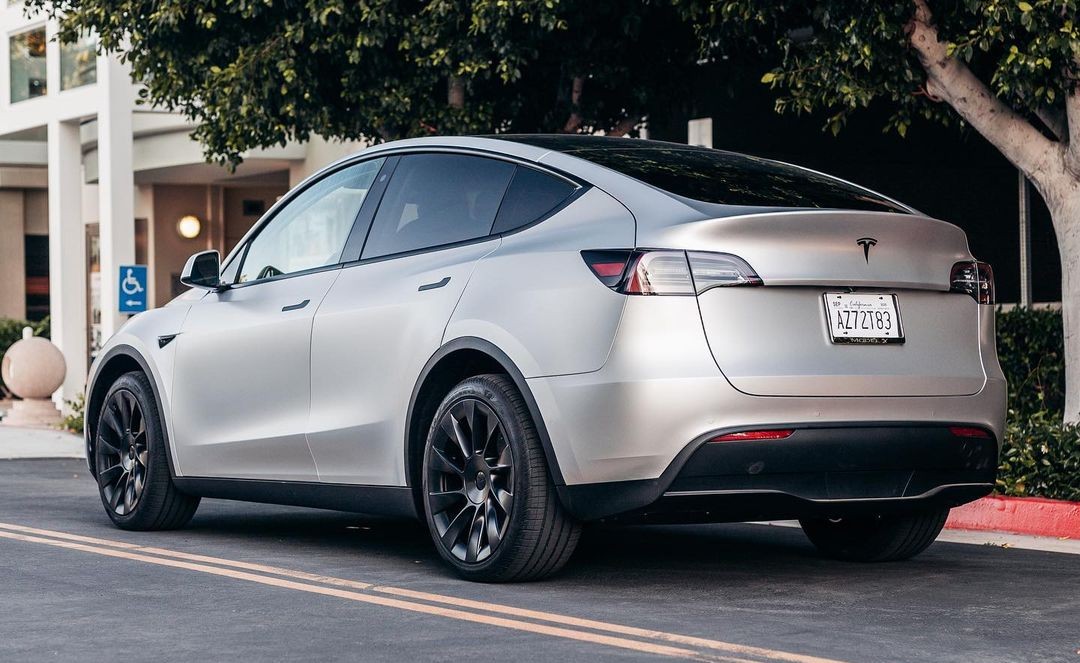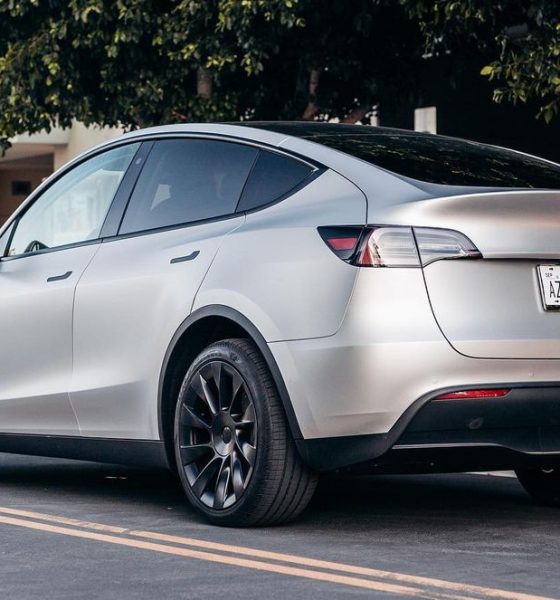

News
Tesla’s Safety Score system will be key to in-house insurance’s affordability
Tesla’s Safety Score system may still be in its early stages, but it seems to be a key part of some of the company’s upcoming products. This is particularly true for the Safety Score system, which was recently launched ahead of FSD Beta’s expansion. As observed by Tesla owners who signed up for the company’s in-house insurance in Texas, their rates would be directly tied to their respective Safety Scores.
This is something that would be expected as Tesla expands its in-house insurance service to other states, and perhaps even abroad. As mentioned by CFO Zachary Kirkhorn during the recently-held Q3 2021 earnings call, insurance costs are generally not the fairest thing in the market, with low-risk owners typically overpaying on their rates to subsidize drivers who were riskier on the road. Kirkhorn explained that the car insurance market, in its current state, uses limited data. Fortunately, data just happens to be one of Tesla’s biggest strengths.
“We entered the insurance market kind of unintentionally, I would say. Our customers were coming to us, complaining that the price of traditional insurance was too high and it was reducing the affordability of a Tesla… As we started to do more research, essentially, the tools by which the insurance is traditionally calculated are optimized based upon the existing data, but the existing data is limited. So there’s a focus on things like marital status or age or other attributes like that. Accident history is a good one, etc.
“But what essentially happens here is customers who are low risk and don’t actually file many claims end up overpaying on their insurance relative to their cost. That overpayment then goes to riskier customers who are essentially being subsidized. And, you know, as we looked at this and we looked at the data, we thought this just doesn’t seem like it’s fair. At Tesla, because our cars are connected, because they are essentially computers on wheels, there’s enormous amounts of data that we have available to us to be able to assess the attributes of a driver who’s operating that car and whether those attributes correlate with safety because we do get a signal when a car has been in an accident,” the CFO remarked.
Tesla then proceeded to analyze literally billions of miles of driving history from its fleet, and from this study came a model that was able to predict with decent accuracy the probability of collisions over time. But this was just the beginning. Tesla has learned and is continuing to learn a lot more about its fleet, particularly as the company rolled out its Safety Score system and the FSD Beta Enrollment Program.
“We have almost 150,000 cars currently using a safety score. And I believe the latest data is over 100 million miles of driving. So we’ve been able to go back and analyze that data. And we’ve learned two things coming from that. The first is that the probability of collision for a customer using a safety score versus not is 30% lower. It’s a pretty big difference. It means that the product is working and customers are responding to it. The second thing that we’ve looked at is what is the probability of collision based upon actual data as a function of a driver safety score.
“And that is aligning with our models. Most notably, if you’re in the top tier of safety compared to lower tiers, there’s multiple X difference in probability of collision based upon actual data. So this is a very new and very exciting frontier for us. I know that was long-winded, but I — we spent a lot of time on this and we put a lot of thought into it… So we’re very excited about it. We’re excited about individual risk-based pricing. We’re excited about the ability for folks to become safer and, as a result, save money. And it feeds into our priority of a company — of building the safest products in the world,” Kirkhorn concluded.
Don’t hesitate to contact us with news tips. Just send a message to tips@teslarati.com to give us a heads up.

News
Tesla China delivery centers look packed as 2025 comes to a close
Needless to say, it appears that Tesla China seems intent on ending 2025 on a strong note.

Tesla’s delivery centers in China seem to be absolutely packed as the final days of 2025 wind down, with photos on social media showing delivery locations being filled wall-to-wall with vehicles waiting for their new owners.
Needless to say, it appears that Tesla China seems intent on ending 2025 on a strong note.
Full delivery center hints at year-end demand surge
A recent image from a Chinese delivery center posted by industry watcher @Tslachan on X revealed rows upon rows of freshly prepared Model Y and Model 3 units, some of which were adorned with red bows and teddy bears. Some customers also seem to be looking over their vehicles with Tesla delivery staff.
The images hint at a strong year-end push to clear inventory and deliver as many vehicles as possible. Interestingly enough, several Model Y L vehicles could be seen in the photos, hinting at the demand for the extended wheelbase-six seat variant of the best-selling all-electric crossover.
Strong demand in China
Consumer demand for the Model Y and Model 3 in China seems to be quite notable. This could be inferred from the estimated delivery dates for the Model 3 and Model Y, which have been extended to February 2026 for several variants. Apart from this, the Model Y and Model 3 also continue to rank well in China’s premium EV segment.
From January to November alone, the Model Y took China’s number one spot in the RMB 200,000-RMB 300,000 segment for electric vehicles, selling 359,463 units. The Model 3 sedan took third place, selling 172,392. This is quite impressive considering that both the Model Y and Model 3 are still priced at a premium compared to some of their rivals, such as the Xiaomi SU7 and YU7.
With delivery centers in December being quite busy, it does seem like Tesla China will end the year on a strong note once more.
News
Tesla Giga Berlin draws “red line” over IG Metall union’s 35-hour week demands
Factory manager André Thierig has drawn a “red line” against reducing Giga Berlin’s workweek to 35 hours, while highlighting that Tesla has actually increased its workers’ salaries more substantially than other carmakers in the country.

Tesla Giga Berlin has found itself in a new labor dispute in Germany, where union IG Metall is pushing for adoption of a collective agreement to boost wages and implement changes, such as a 35-hour workweek.
In a comment, Giga Berlin manager André Thierig drew a “red line” against reducing Giga Berlin’s workweek to 35 hours, while highlighting that Tesla has actually increased its workers’ salaries more substantially than other carmakers in the country.
Tesla factory manager’s “red line”
Tesla Germany is expected to hold a works council election in 2026, which André Thierig considers very important. As per the Giga Berlin plant manager, Giga Berlin’s plant expansion plans might be put on hold if the election favors the union. He also spoke against some of the changes that IG Metall is seeking to implement in the factory, like a 35-hour week, as noted in an rbb24 report.
“The discussion about a 35-hour week is a red line for me. We will not cross it,” Theirig said.
“(The election) will determine whether we can continue our successful path in the future in an independent, flexible, and unbureaucratic manner. Personally, I cannot imagine that the decision-makers in the USA will continue to push ahead with the factory expansion if the election results favor IG Metall.”
Giga Berlin’s wage increase
IG Metall district manager Jan Otto told the German news agency DPA that without a collective agreement, Tesla’s wages remain significantly below levels at other German car factories. He noted the company excuses this by referencing its lowest pay grade, but added: “The two lowest pay grades are not even used in car factories.”
In response, Tesla noted that it has raised the wages of Gigafactory Berlin’s workers more than their German competitors. Thierig noted that with a collective agreement, Giga Berlin’s workers would have seen a 2% wage increase this year. But thanks to Tesla not being unionized, Gigafactory Berlin workers were able to receive a 4% increase, as noted in a CarUp report.
“There was a wage increase of 2% this year in the current collective agreement. Because we are in a different economic situation than the industry as a whole, we were able to double the wages – by 4%. Since production started, this corresponds to a wage increase of more than 25% in less than four years,” Thierig stated.
News
Tesla is seeing a lot of momentum from young Koreans in their 20s-30s: report
From January to November, young buyers purchased over 21,000 Teslas, putting it far ahead of fellow imported rivals like BMW and Mercedes-Benz.

Tesla has captured the hearts of South Korea’s 20s-30s demographic, emerging as the group’s top-selling imported car brand in 2025. From January to November, young buyers purchased over 21,000 Teslas, putting it far ahead of fellow imported rivals like BMW and Mercedes-Benz.
Industry experts cited by The Economist attributed this “Tesla frenzy” to fandom culture, where buyers prioritize the brand over traditional car attributes, similar to snapping up the latest iPhone.
Model Y dominates among young buyers
Data from the Korea Imported Automobile Association showed that Tesla sold 21,757 vehicles to the 20s-30s demographic through November, compared to BMW’s 13,666 and Mercedes-Benz’s 6,983. The Model Y led the list overwhelmingly, with variants like the standard and Long Range models topping purchases for both young men and women.
Young men bought around 16,000 Teslas, mostly Model Y (over 15,000 units), followed by Model 3. Young women followed a similar pattern, favoring Model Y (3,888 units) and Model 3 (1,083 units). The Cybertruck saw minimal sales in this group.
The Model Y’s appeal lies in its family-friendly SUV design, 400-500 km range, quick acceleration, and spacious cargo, which is ideal for commuting and leisure. The Model 3, on the other hand, serves as an accessible entry point with lower pricing, which is valuable considering the country’s EV subsidies.
The Tesla boom
Experts described Tesla’s popularity as “fandom culture,” where young buyers embrace the brand despite criticisms from skeptics. Professor Lee Ho-geun called Tesla a “typical early adopter brand,” comparing purchases to iPhones.
Professor Kim Pil-soo noted that young people view Tesla more as a gadget than a car, and they are likely drawn by marketing, subsidies, and perceived value. They also tend to overlook news of numerous recalls, which are mostly over-the-air software updates, and controversies tied to the company.
Tesla’s position as Korea’s top import for 2025 seems secured. As noted by the publication, Tesla’s December sales figures have not been reported yet, but market analysts have suggested that Tesla has all but secured the top spot among the country’s imported cars this year.








